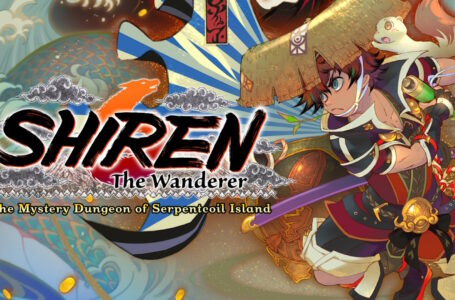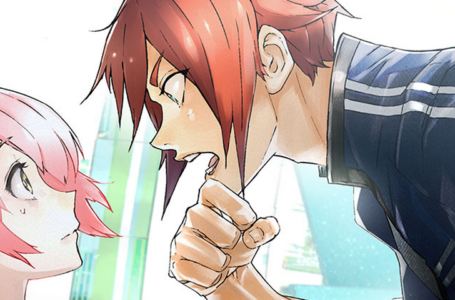Have you played… 428: Shibuya Scramble?
We all love a visual novel around here, right? Well, have you played one of the most unusual visual novels out there? 428: Shibuya Scramble is a game that I don’t think anyone expected to see come west — but in 2018, that’s exactly what happened. And anyone who played it had a thoroughly marvellous time. So if you haven’t played it, you should. And here’s why.
428: Shibuya Scramble is part of developer Chunsoft’s “Sound Novel” series. The early (and Japan-exclusive) entries in this loose series helped to establish the medium we today know as visual novels, but 428: Shibuya Scramble in particular feels notably distinct from other examples of that medium.
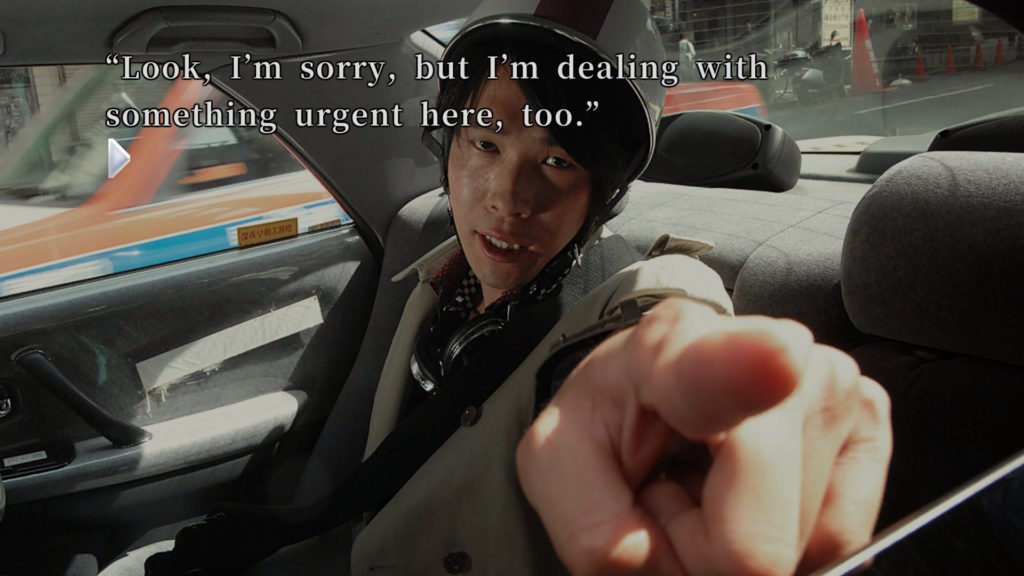
For example, there’s no voice acting in the game. There’s plenty of dialogue, yes, but no actual voice acting involved; instead, the characters’ voices are left up to the player’s imagination. This is in keeping with early examples of visual novels in general before large amounts of storage capacity became commonplace — but it’s noteworthy that 428: Shibuya Scramble maintains that tradition.
Instead, it places a strong emphasis on creating an atmosphere, making use of both ambient sound and music to provide an immersive sense of actually being in a location, but still leaving scope for the player to project their own interpretations onto the scene. It puts you in the world, but what you make of that world is up to you.
Secondly — and this isn’t necessarily a “Sound Novel” thing, but it’s certainly something that makes 428: Shibuya Scramble stand out — we have the fact that we’re looking at a game which completely eschews hand-drawn anime-style artwork in favour of live-action photography. Over 120,000 photographs, in fact, because this is a game in which there is no equivalent of the traditional visual novel “character sprite over static backdrop” presentation — each and every moment of the story, no matter how mundane, has a suitable photographic accompaniment.
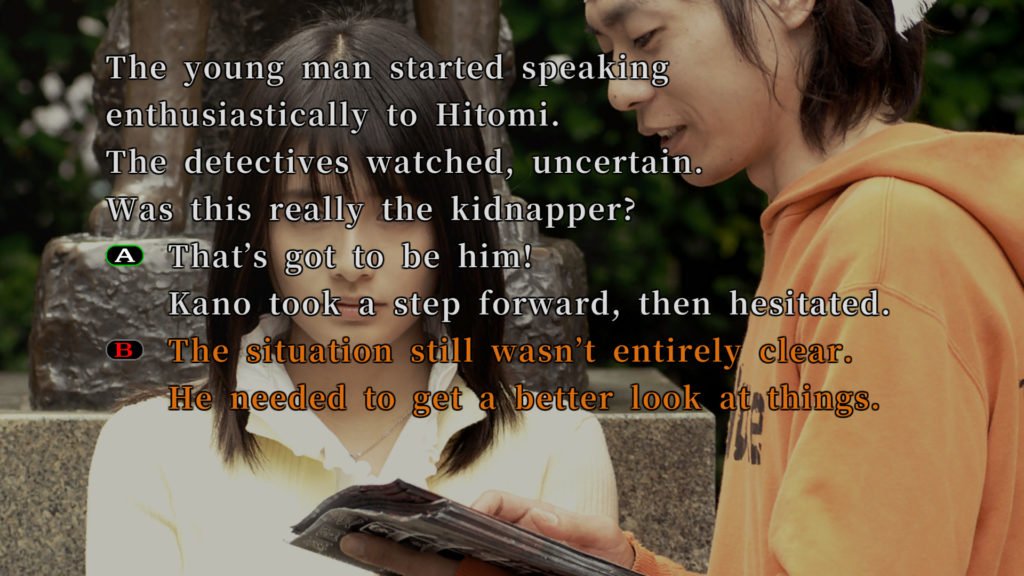
Thirdly, we have a sense that the game has “mechanics” after a fashion rather than simply picking choices to send you down a different route. This is something that a lot of visual novels experiment with — at the time of writing we’re in the midst of exploring Full Metal Daemon Muramasa, for example, which is a very interesting example — but 428: Shibuya Scramble really gives a feeling that the overall narrative is as much a puzzle to be solved by the player as it is something that unfolds relatively passively.
Okay, so we’ve established that 428: Shibuya Scramble is a rather unconventional sort of visual novel. What actually is it, though? What’s it all about? Well, initially that might not be altogether clear — and that’s part of the appeal.
As the game begins, you have access to a couple of completely separate narrative threads that are unfolding in parallel with one another — though there are moments when they cross over, which is where the majority of the game’s interesting decision points come in. As you progress through the narrative — which is split into chapters based on hours of time on one particular day — you’ll reveal other characters who initially appear unrelated to what is happening, but who eventually come together for various reasons.
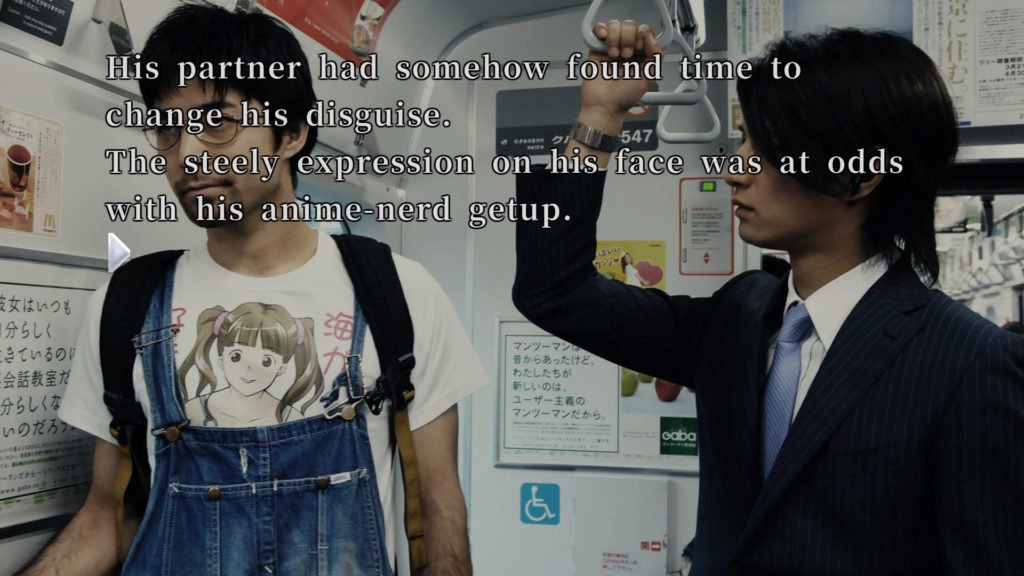
Eventually, you’ll have seen the stories of an up-and-coming detective, an overenthusiastic newspaper reporter, an amnesiac mascot, a hot-headed but community-minded youngster and a scientific researcher. And all of these narrative sequences are written in quite disparate styles — which makes the point when they come together for the grand finale all the more interesting.
What begins with an abduction attempt progresses on to something altogether more sinister — and ridiculous — and a narrative that, the deeper into it you delve, the more questions you’ll end up wanting to know the answers to.
And to 428: Shibuya Scramble’s credit, it provides a significant number of answers by the end of the experience — including some very unexpected sequences towards the end of the game as a whole that allow you much deeper insight into characters you may have thought relatively unimportant in the grand scheme of things. I won’t spoil all of these, but I will say the whole chapter that is presented in anime style and which was put together by Type-Moon (of Fate/stay night fame) is a particular highlight.
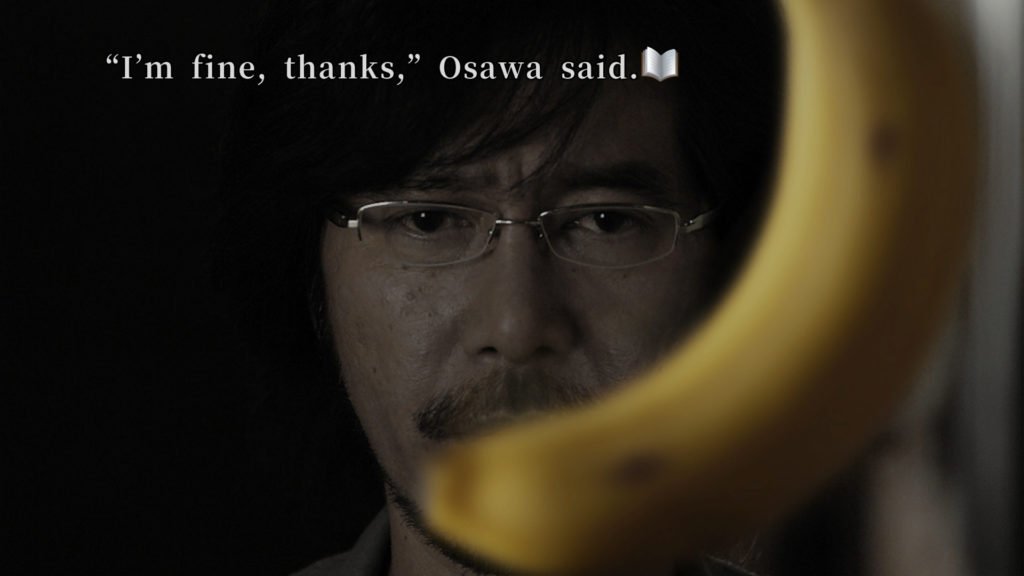
So how does it actually work? Well, it’s a little more complex than most visual novels. There are conventional choices to be made, but these are not the only way in which you interact with 428: Shibuya Scramble. Because the decisions you make for one character will often end up having an unexpected effect on one of the others, you need to take this in mind while playing — and the in-game “time chart” allows you to keep track of what is happening when in relation to one another. You can even jump back in time to choices you’ve previously made; no need for save-scumming here.
One interesting addition to the usual visual novel formula is the concept of “jumps”. These involve words or phrases in the narrative text that are highlighted in red, and allow you to jump from the character you’re currently playing to another one that they’ve mentioned or referenced. These usually occur when one character has reached a “Keep Out”, which is a forcible pause in their storyline until another character has achieved something specific. When these things occur, taking advantage of a jump will break through the Keep Out and allow the other narrative to progress.
There are a lot of Bad Ends in 428: Shibuya Scramble, but you shouldn’t think of them as being a “fail state”. Rather, they provide important clues as to how the characters’ lives relate to one another — and they typically provide hints as to how you can organise things in such a way that everyone 1) survives and 2) benefits from the overall situation.
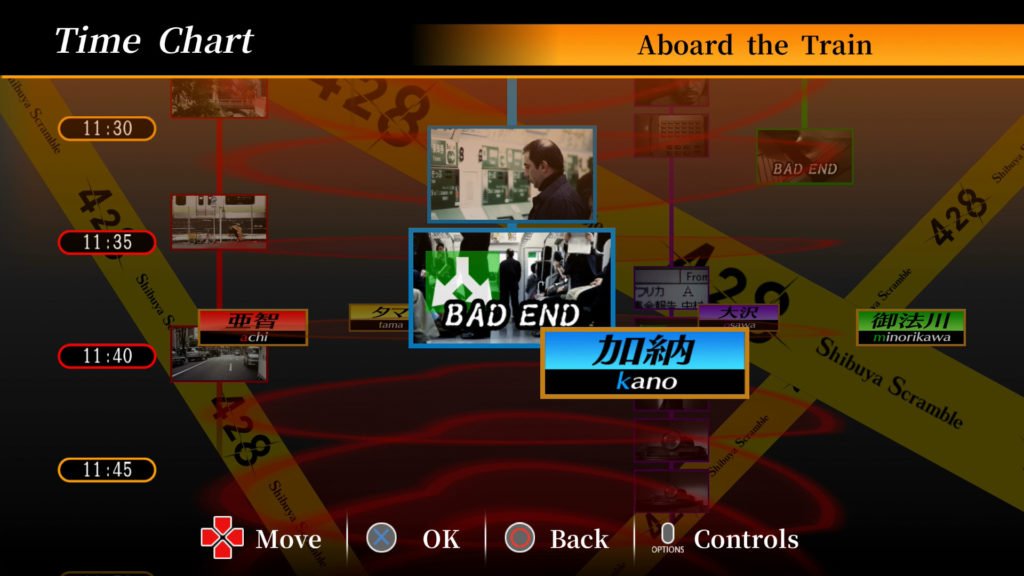
A good example involves the character Achi, who encounters some gang members and confronts them. During this sequence, the gang members are chased away, and Achi is presented with the opportunity to either chase them or interact with the newcomer.
If he chooses the former option, he ends up run down by other playable character Kano screeching around the corner in a taxi, leading to a Bad End in both their routes: Achi’s can’t continue because he’s dead, and Kano’s can’t continue because having to deal with the accident means that his lead goes cold and the case can’t be solved.
Conversely, choosing the other option means that Kano successfully gets to his destination uninterrupted, and Achi gets some new information. This is a very simple example; later in the game, there are myriad intertwining narrative threads that you’ll be expected to untangle — though you won’t have to do so without hints until the finale of the main narrative.
Suffice to say, 428: Shibuya Scramble is a mechanically and structurally fascinating visual novel quite unlike anything else out there — and if you enjoy games that push the boundaries of storytelling, it’s definitely one you should check out. Couple that with the fact that the actual story itself is by turns fascinating, compelling, dramatic, humorous and tragic and you have a formidable package that anyone with a penchant for interactive fiction owes it to themselves to try out sooner rather than later. You won’t regret it!
428: Shibuya Scramble is available now for PlayStation 4 (where it’s 85% off until March 2, 2022) and PC via Steam. The PS4 version has a physical release, but it can be a little hard to come by today.
Join The Discussion
Rice Digital Discord
Rice Digital Twitter
Rice Digital Facebook
Or write us a letter for the Rice Digital Friday Letters Page by clicking here!
Disclosure: Some links in this article may be affiliate links, which means we may earn a small commission if you make a purchase after clicking on them. This is at no additional cost to you and helps support Rice Digital!
- Letter from the Editor: passing the torch - June 30, 2023
- Super Woden GP 2 is looking promising - June 30, 2023
- Inti Creates is making a 32 bit-style Love Live action platformer - June 26, 2023




